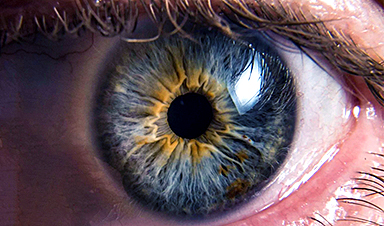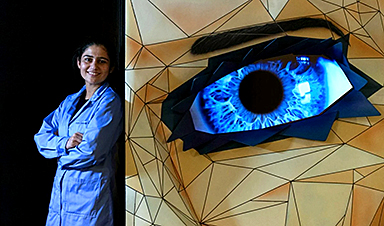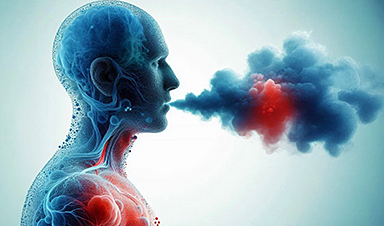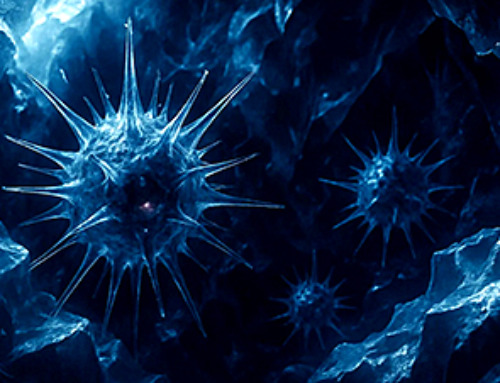Experimental mRNA vaccine proves highly effective against H5N1 in animal studies, offering hope for rapid pandemic response.
Researchers from the Perelman School of Medicine at the University of Pennsylvania have developed an experimental mRNA vaccine against avian influenza virus H5N1. The vaccine is highly effective in preventing severe illness and death in preclinical models and could help manage the current H5N1 outbreaks in birds and cattle in the United States and prevent its transmission to humans.
This research was recently published in Nature Communications.
Advantages of mRNA Technology in Vaccine Development
Scott Hensley, PhD, a professor of Microbiology at the Perelman School of Medicine, highlighted the flexibility of mRNA technology in vaccine development. “The mRNA technology allows us to be much more agile in developing vaccines; we can start creating an mRNA vaccine within hours of sequencing a new viral strain with pandemic potential,” he explained.
“During previous influenza pandemics, like the 2009 H1N1 pandemic, vaccines were difficult to manufacture and did not become available until after the initial pandemic waves subsided.”
Hensley’s laboratory worked on this study in collaboration with the laboratory of mRNA vaccine pioneer and Nobel Prize winner Drew Weissman, MD, PhD.
“Before 2020, experts thought the influenza virus posed the greatest risk of causing a pandemic, and we had limited options for creating a vaccine if that had happened,” said Weissman. “COVID-19 showed us the power of mRNA-based vaccines as tool to protect humans from emerging viruses quickly, and we are better prepared now to respond to a variety of viruses with pandemic potential, including influenza”
Traditional vs. mRNA Vaccine Production
Most influenza vaccines are egg-based, where experts inject fertilized chicken eggs with what they predict will be the dominant viral strain, let it replicate, and then inactivate the virus to use in the flu shots distributed globally. However, viruses must first be adapted to replicate in fertilized eggs before these conventional vaccines can be produced, which can take up to six months, presenting potential problems for quickly producing vaccine when it’s needed most during the first few months of a pandemic. mRNA vaccines are easily and quickly adapted to protect against different strains of influenza viruses, and don’t require eggs for their development.
Study Findings and Vaccine Efficacy
The Penn researchers developed an mRNA vaccine targeting a specific subtype of the H5N1 virus that is circulating widely in birds and cattle. While it rarely infects humans, some fear that the virus may evolve and cause a human pandemic. The researchers found that the vaccine elicited a strong antibody and T-cell response in mice and ferrets. What’s more, the animals maintained high levels of antibodies even a year after vaccination. Additionally, the researchers found that vaccinated animals who were subsequently infected with H5N1 cleared the virus more rapidly and displayed fewer symptoms than unvaccinated controls. The researchers also note that all of the vaccinated animals survived following H5N1 infection, whereas all the unvaccinated animals died.
Finally, the researchers compared the mRNA vaccine response in mice to their response to a traditional egg-based vaccine and found that the mRNA vaccine was just as effective; both vaccines elicited strong antibody responses, regardless of prior seasonal flu exposures.
Reference: “Development of a nucleoside-modified mRNA vaccine against clade 2.3.4.4b H5 highly pathogenic avian influenza virus” by Colleen Furey, Gabrielle Scher, Naiqing Ye, Lisa Kercher, Jennifer DeBeauchamp, Jeri Carol Crumpton, Trushar Jeevan, Christopher Patton, John Franks, Adam Rubrum, Mohamad-Gabriel Alameh, Steven H. Y. Fan, Anthony T. Phan, Christopher A. Hunter, Richard J. Webby, Drew Weissman and Scott E. Hensley, 23 May 2024, Nature Communications.
DOI: 10.1038/s41467-024-48555-z
The Hunter Laboratory at the University of Pennsylvania School of Veterinary Medicine, the Webby Lab at St. Jude, and Steven Fan at Acuitas also contributed to this research.
This research was funded by the National Institute of Allergy and Infectious Diseases, the National Institutes of Health, and the Department of Health and Human Services (75N93021C00015, 75N93021C00016, R01AI08686, and R01AI126899).
News
Studies detail high rates of long COVID among healthcare, dental workers
Researchers have estimated approximately 8% of Americas have ever experienced long COVID, or lasting symptoms, following an acute COVID-19 infection. Now two recent international studies suggest that the percentage is much higher among healthcare workers [...]
Melting Arctic Ice May Unleash Ancient Deadly Diseases, Scientists Warn
Melting Arctic ice increases human and animal interactions, raising the risk of infectious disease spread. Researchers urge early intervention and surveillance. Climate change is opening new pathways for the spread of infectious diseases such [...]
Scientists May Have Found a Secret Weapon To Stop Pancreatic Cancer Before It Starts
Researchers at Cold Spring Harbor Laboratory have found that blocking the FGFR2 and EGFR genes can stop early-stage pancreatic cancer from progressing, offering a promising path toward prevention. Pancreatic cancer is expected to become [...]
Breakthrough Drug Restores Vision: Researchers Successfully Reverse Retinal Damage
Blocking the PROX1 protein allowed KAIST researchers to regenerate damaged retinas and restore vision in mice. Vision is one of the most important human senses, yet more than 300 million people around the world are at [...]
Differentiating cancerous and healthy cells through motion analysis
Researchers from Tokyo Metropolitan University have found that the motion of unlabeled cells can be used to tell whether they are cancerous or healthy. They observed malignant fibrosarcoma cells and [...]
This Tiny Cellular Gate Could Be the Key to Curing Cancer – And Regrowing Hair
After more than five decades of mystery, scientists have finally unveiled the detailed structure and function of a long-theorized molecular machine in our mitochondria — the mitochondrial pyruvate carrier. This microscopic gatekeeper controls how [...]
Unlocking Vision’s Secrets: Researchers Reveal 3D Structure of Key Eye Protein
Researchers have uncovered the 3D structure of RBP3, a key protein in vision, revealing how it transports retinoids and fatty acids and how its dysfunction may lead to retinal diseases. Proteins play a critical [...]
5 Key Facts About Nanoplastics and How They Affect the Human Body
Nanoplastics are typically defined as plastic particles smaller than 1000 nanometers. These particles are increasingly being detected in human tissues: they can bypass biological barriers, accumulate in organs, and may influence health in ways [...]
Measles Is Back: Doctors Warn of Dangerous Surge Across the U.S.
Parents are encouraged to contact their pediatrician if their child has been exposed to measles or is showing symptoms. Pediatric infectious disease experts are emphasizing the critical importance of measles vaccination, as the highly [...]
AI at the Speed of Light: How Silicon Photonics Are Reinventing Hardware
A cutting-edge AI acceleration platform powered by light rather than electricity could revolutionize how AI is trained and deployed. Using photonic integrated circuits made from advanced III-V semiconductors, researchers have developed a system that vastly [...]
A Grain of Brain, 523 Million Synapses, Most Complicated Neuroscience Experiment Ever Attempted
A team of over 150 scientists has achieved what once seemed impossible: a complete wiring and activity map of a tiny section of a mammalian brain. This feat, part of the MICrONS Project, rivals [...]
The Secret “Radar” Bacteria Use To Outsmart Their Enemies
A chemical radar allows bacteria to sense and eliminate predators. Investigating how microorganisms communicate deepens our understanding of the complex ecological interactions that shape our environment is an area of key focus for the [...]
Psychologists explore ethical issues associated with human-AI relationships
It's becoming increasingly commonplace for people to develop intimate, long-term relationships with artificial intelligence (AI) technologies. At their extreme, people have "married" their AI companions in non-legally binding ceremonies, and at least two people [...]
When You Lose Weight, Where Does It Actually Go?
Most health professionals lack a clear understanding of how body fat is lost, often subscribing to misconceptions like fat converting to energy or muscle. The truth is, fat is actually broken down into carbon [...]
How Everyday Plastics Quietly Turn Into DNA-Damaging Nanoparticles
The same unique structure that makes plastic so versatile also makes it susceptible to breaking down into harmful micro- and nanoscale particles. The world is saturated with trillions of microscopic and nanoscopic plastic particles, some smaller [...]
AI Outperforms Physicians in Real-World Urgent Care Decisions, Study Finds
The study, conducted at the virtual urgent care clinic Cedars-Sinai Connect in LA, compared recommendations given in about 500 visits of adult patients with relatively common symptoms – respiratory, urinary, eye, vaginal and dental. [...]






















